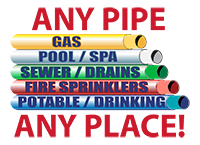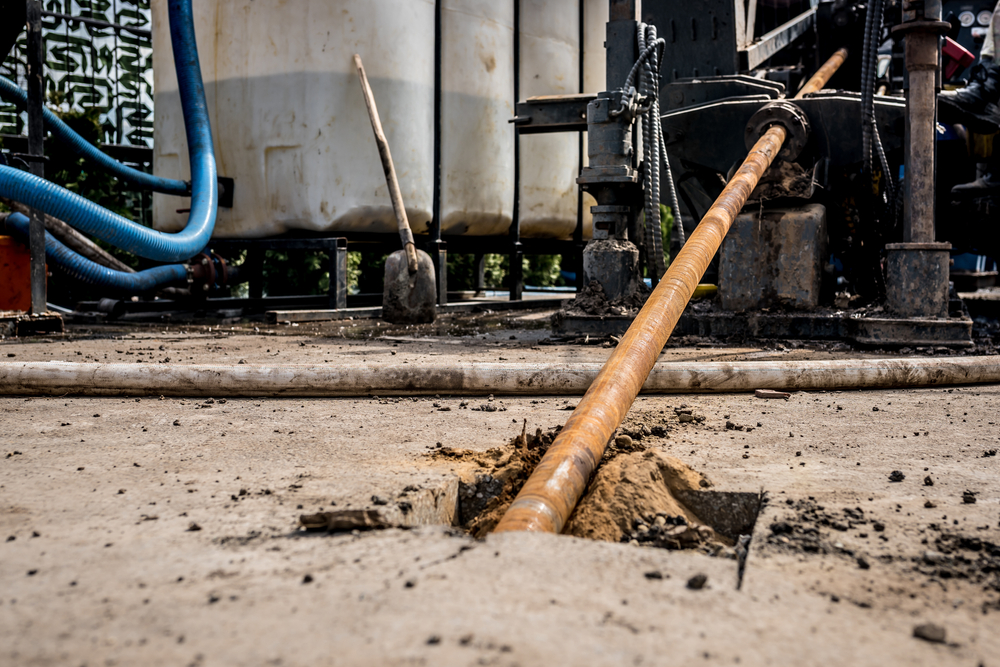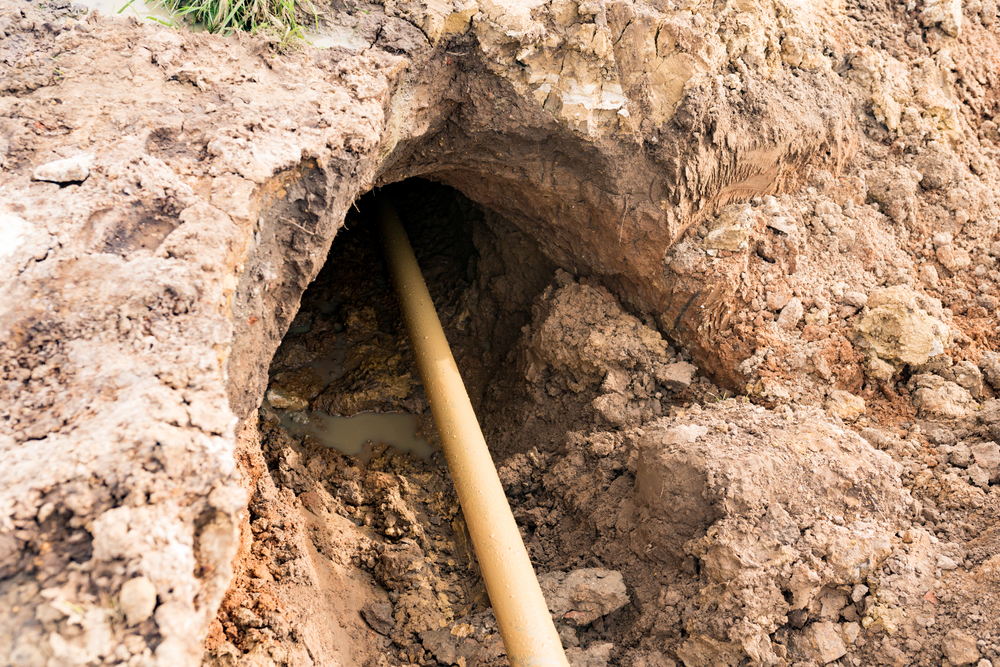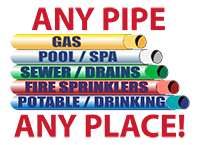Trenchless pipe lining is a modern way of laying and repairing underground water pipes. Water pipe leakage is one of the biggest civic concerns in San Diego. Much of the city’s pipelines were laid out decades ago, and have since gone through significant wear and tear. They were also placed using outdated pipe laying methods, that run the risk of significantly damaging the foundations of your property. To counter these problems, engineers have come up with trenchless pipe lining. It’s a tech-heavy way of laying and repairing pipes that costs less, requires less human capital, and consumes less time.
Today we will talk about everything that you need to know about trenchless pipe lining, its benefits, and why it is growing to be the first choice of homeowners and engineers. But first, we’ll briefly explain what the trenches pipe lining process works.
Types of trenchless pipe lining
Broadly, there are two types of trenchless pipe lining: lateral pipe lining and pipe bursting. The use of the former is reserved for minor cracks and holes in water pipes. But do not underestimate the impact of such small impacts on your pipe. Slow water leakage can be even more dangerous than a pipe being completely broken. That’s because it can take a lot of time to find the affected spot in the case of a small crack on a pipe. By that time, the leaking pipe would already have caused a lot of damage. It can make the entire pipe weak and prone to breakage. Ignoring the small problems in pipelines can be a huge mistake in the long run.
The other type of trenchless pipe lining is called pipe bursting. Though it’s named so, it does not involve any physical blast. Instead, it’s a neat way of replacing a section of a cracked or broken pipe without altering the entire pipe section. Pipe bursting is for those times when a pipe has gone through enough damage and can no longer work with its existing body. What pipe bursting does is it replaces the affected section of the pipe without removing the entire unit. Think of it as spot washing your jeans instead of throwing the entire pant into a washing machine.
The advantages are apparent — it costs less and requires less time. But that’s not all. Even the quality of the pipes is better after pipe bursting replacements.
To determine which method would be the best for your scenario, a technician would generally survey the affected area. The survey involves manual checking and the insertion of tiny cameras to accurately pinpoint the affected area. Once the area has been surveyed completely, they would decide whether lateral pipe lining or pipe bursting would be the better option. The decision is based on the severity of the damage in almost all cases. Spatial constraints can also influence the decisions in some cases. Once the method is finalized, the equipment and their technicians arrive to finish the work in no time.
Lateral pipe lining
Lateral pipe lining is the go-to approach for repairing damaged pipes. This is not for times when you need a major rehaul or degradation. It’s best suited for minor cracks and breakages — those that do not affect a huge part of the pipeline.
In lateral pipe lining, a special chemical mixture of resin is molded onto the pipe to help it retain its shape. The process of lateral pipe lining begins with digging a small hole on the site of the damaged pipe. But before that, you need to locate the area where the damage occurred. Once the area of damage is decided on, a technician would insert a small camera into the hole to accurately identify the spot of damage. From there, the photographic images are studied to calculate the extent of the damage, like the size of the cracks.
Steps of lateral pipe lining
From here, a crew of pipe repairers would dig a small trench by systematically removing dirt, debris, soils, roots, and other blockages. Then the crew makes sure that the damage is small enough to be filled by a resin composition. After that, the resin compound is placed on the liner and kept there until it has settled. Both the liner and the resin are poured into a specialized inversion machine. This forces the liner to drip into the existing pipe from the inside. The liner is then inserted inside the pipe with compressed air-inflated, and the resin-coated outside of the liner is allowed to bond strongly with the original pipe.
Pipe bursting
When the damaged pipe has little to medium deterioration, lateral pipe lining gives us the best result in terms of strength and durability. The older pipe’s internal structure is sufficient for the lining to solidify in shape and substitute its purpose.
But in the case of a pipe that hardly has any structural integrity left, pipe bursting is the best possible option. To reach the pipe, a construction crew simply needs to make a small hole to access the underground pipe, similar to lateral pipe lining.
When the crew arrives at the pipe, they survey it to calculate the size of the substitute pipe that is required. Technicians then add a robust cone tip device that is pushed by a draw rod or driven by hydraulics. The cone is then pushed or pulled through the older pipe.
Lateral pipe lining vs Pipe bursting
While lateral pipe lining tackles the smaller, day-to-day pipeline issues, pipe bursting deals with situations that may occur once in years. Nonetheless, both methods have their own merits and advantages. Just like lateral pipe cannot accomplish what pipe bursting can, you’d not benefit from the pipe bursting technique in the case of minor damages.
The plumbing crew you hire may require sufficient time to identify and locate the damaged area of the pipe. Once the location is discovered, the entire process is finished in hours, be it lateral pipe lining or pipe bursting. In both cases, you’d want skilled and expert technicians to handle the task.
Benefits of trenchless pipe lining
There are tonnes of benefits attached to trenchless pipe lining compared to traditional methods of laying pipes. To a large extent, these benefits are a result of improvement and enhancement. The earlier methods of laying pipes date back hundreds, if not thousands, of years. It is only natural that as technology progresses, so would pipe laying methods. If you are looking for a hassle-free, cost-effective way of laying or repairing pipes, trenchless pipe lining is the way forward.
Now, let’s discuss some of the key benefits of trenchless pipe lining vs traditional techniques.
Keep your landscapes intact
A common problem that all homeowners face relates to the destruction of landscaping during pipe maintenance and repair. When you are considering the removal of an entire section of pipes from the ground, it is bound to have an effect on how your landscape looks afterward. With trenchless pipe lining, on the other hand, your landscaping stays intact, no matter how trivial or severe the pipeline damage is. The entire process is carried out through precisely dug small holes and small cameras, leaving your landscape just like it was.
Pipe relining material lasts a long time
On average, you can expect your pipe relining material to last for more than 50 years. It can be more or less depending on specific circumstances. However, the central point is that pipe relining material is robust and long-lasting. More importantly, when it needs another coating or a complete renovation, it’d also be done through precision holes and modern trenchless pipe lining equipment. Most existing pipe materials do not last for more than 50 years on average. If you are looking for a durable option, trenchless pipe lining is right for you.
Pipes repaired with lateral pipe lining work better
If you go back and read how lateral pipe lining, you’d realize that the process essentially makes a section of the pipe stronger than before. As a result, the pipe is now capable of delivering higher volumes at greater forces. If you talk to your pipe repair crew in advance, they can make the new lining even stronger, making your pipeline better than before. As you can see, here you can upgrade your pipe without digging it out of the ground and replacing it with a new one. That’s one of the many reasons most people opt for lateral pipe lining for domestic plumbing issues.
Trenchless pipe lining works on all pipe materials
Be it PVC, iron, clay, or some other type of material, pipe lining works for all pipes. It saves you huge trouble when it comes to houses that others have occupied before you. For such houses, it can be very difficult to predict what the pipe material is made of until you manually inspect it. More importantly, different pipes may have been used in different parts of the house. Trenchless pipe lining eliminates all such concerns.
Cost of trenchless pipe lining is much less
The average per for cost of trenchless pipe lining comes down to around $60 to $250 per foot. For traditional pipe laying methods, it can go up to $300 per foot. As you can see, there is a big gap between the two when you are taking into account multiple feet of pipes. Pipe bursting typically costs more than lateral pipe lining, but the difference isn’t much.
The area where you save more money with trenchless pipe lining relates to the preparatory stages. For traditional pipe lining, you need to find a separate crew that will dig the tunnel and brings the pipeline to the surface. The cost from that can range from $5 to $20 per foot. For trenchless pipe lining, you do not have to worry about any of these expenses. The pipeline crew itself takes care of all digging and locating, and you do not have to pay contractors separately. It’s a huge avenue for saving money when you have several meters of pipe to repair or replace.
Pipelining promotes safety
Since pipelining is done with materials like Polyethylene, its performance is much better than traditional pipes. Conventional pipes have several joints and seams that make it difficult for the pipe to stay intact for a long time. The more the pipes are used, the more fragile they become. But pipelining does not pose any such problems. These pipes do not even have any joint or seam that can weaken them from the center. Once you install it, you can be assured about the health of your plumbing systems for a long time.
The process takes less time to complete
Repairing or changing a pipeline is a time-consuming thing if you do it the traditional way. The process, from the beginning to the end, can take several days. And also note that the longer the work continues, the longer your plumbing system will be affected. That’s one of the many reasons you should not go for traditional pipelining if you are short on time.
Trenchless pipe lining is 30% to 50% faster than traditional methods of lining pipes. More importantly, your contractor takes care of everything and you do not have to waste time coordinating multiple teams. The work will be over faster, and you’ll be ready to use your plumbing system. Go for trenchless pipe lining if you want to save both time and money.
Contact San Diego Plumbing and Pipelining to learn more about trenchless pipe lining in your area!
Over the past several years, trenchless pipe lining has emerged to be the method of choice for both engineers and homeowners. If you have gone through all the benefits of trenchless pipe lining, you should also be convinced by now.
The problem that many people come across is the lack of reliable contractors for trenchless pipe lining. If you are in and around San Diego, California, you are in luck. San Diego Plumbing And Pipelining can answer all your doubts and questions about trenchless pipe lining, and a lot more. We hope you learned important things about trenchless pipe lining today.








